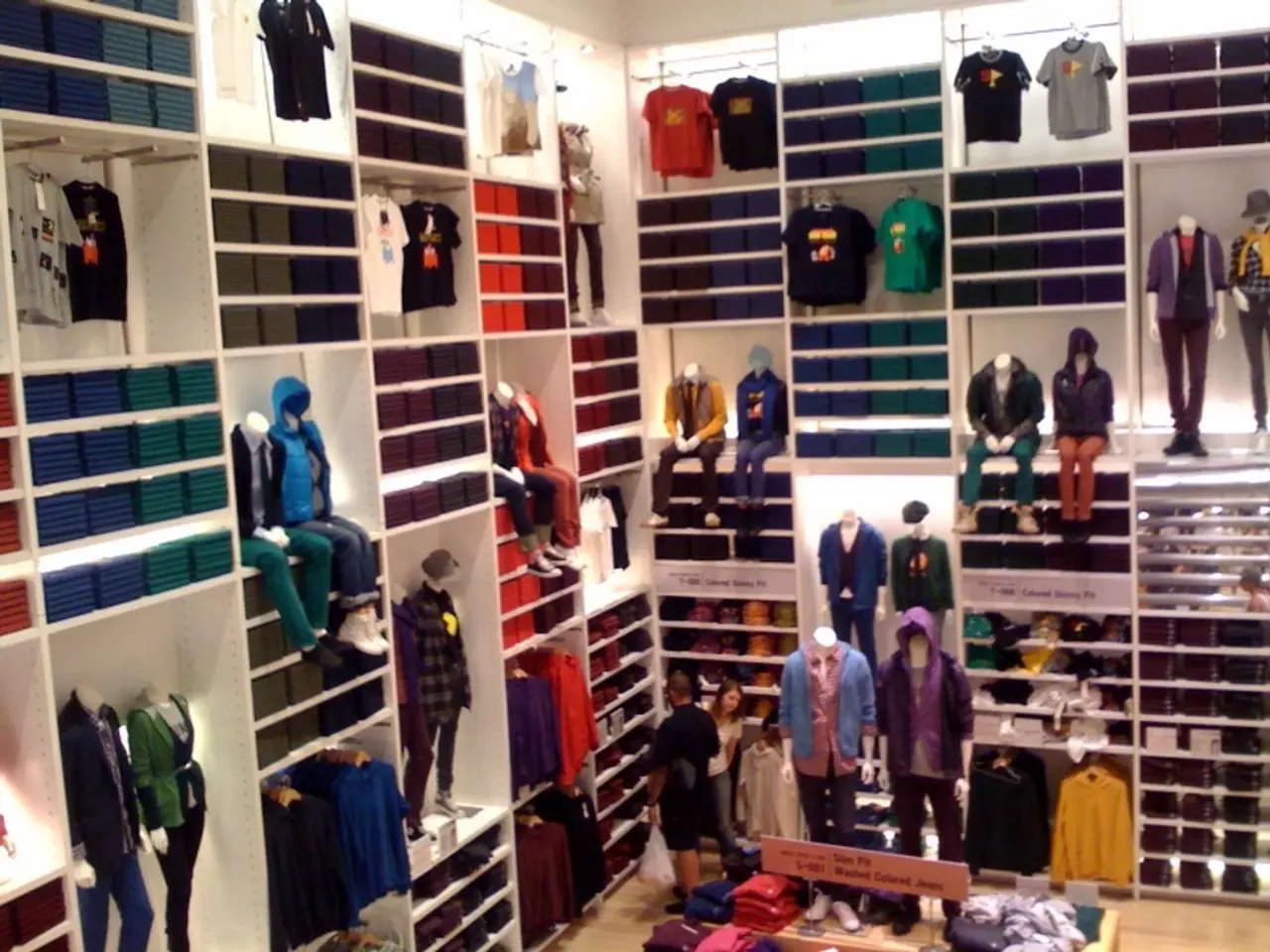Predicting Trends in Clothing: The Impact of Data on Garment Stock Management
In the ever-evolving world of fashion, staying ahead of the curve is crucial. Today, leading fashion brands are leveraging advanced data-driven analytics and AI technologies to predict and respond to fashion trends and consumer preferences with unprecedented precision and agility.
AI-Powered Trend Analysis
Brands are utilising AI systems that analyse vast datasets from sources such as global fashion weeks, social media posts, retail sales, runway and street style images, and even economic and weather data. This powerful tool enables them to identify emerging styles, popular colours, fabrics, and silhouettes with remarkable accuracy (up to 92%). By forecasting demand shifts before competitors, these brands can significantly reduce the risk of overstock or stockouts.
Consumer Preference Analysis
Historical sales and return data are subjected to descriptive and diagnostic analytics to decode consumer buying behaviours and preferences regionally and across different store locations. This allows for inventory alignment with actual demand patterns and preference fluctuations, ensuring that brands cater to their customers' needs effectively.
Real-Time Sample and Inventory Tracking
Platforms like Launchmetrics Samples provide live data on sample performance and market reactions, enabling brands to pivot quickly in response to regional demand changes. This improves sell-through rates and minimises waste, benefiting both the brands and the environment.
Integrated Business Intelligence
Analytics unify data across design, production, purchasing, and marketing teams, breaking down silos and fostering collaborative, data-driven decision-making. This holistic approach improves accuracy in forecasting and inventory planning, ensuring that all aspects of a brand's operations are aligned and working towards the same goal.
AI-Enhanced Design and Forecasting Tools
Machine learning, computer vision, and generative AI models are transforming traditional forecasting from intuition-based to predictive, enabling brands to anticipate trend cycles, optimise fabric and material use, and innovate new designs aligned with projected market demand.
Competitive Intelligence Modules
Some AI systems track competitors’ brand colour schemes, silhouette preferences, price positioning, collection launch timing, and marketing styles to inform a brand’s own inventory strategy, ensuring better market positioning.
By implementing these data-driven approaches, fashion brands can reduce overproduction, anticipate fabric and material needs, tailor marketing campaigns, respond swiftly to changing consumer trends, and align inventory tightly with forecasted demand. This maximises profitability and sustainability in fast-moving fashion markets.
Implementing the right tools, like Uphance, that can efficiently process and analyse large sets of data to extract meaningful insights is crucial in overcoming data overload. Balancing historical data with real-time market analysis and consumer feedback is essential to accurately predict future consumer behaviours, especially in a fast-paced industry like fashion.
As the fashion industry continues to evolve, emerging technologies like AI, augmented reality (AR), and virtual reality (VR) will further revolutionise fashion forecasting, offering more precise trend predictions and innovative ways for consumers to engage with fashion. Sustainability will likely become a greater focus, with data helping brands track the sustainability of their supply chains and align inventory with the growing consumer demand for responsible fashion.
Respecting consumer data privacy will be paramount, requiring brands to navigate the delicate balance between leveraging data for insights and maintaining consumer trust and privacy. Personalisation and customisation will rise, with brands using data to offer more customised products, tailoring inventory to individual preferences and creating a more personal connection with consumers.
E-commerce analytics tools provide insights into online consumer behaviour and can inform decisions on inventory planning for e-commerce platforms. Diversifying inventory to include a mix of trendy and classic pieces can mitigate the risk of predicting long-term trends in fashion. Agile and flexible inventory management strategies are vital for brands to adapt quickly to rapid market changes in the fashion industry. Customer feedback acts as a compass, guiding brands toward what their customers want.
Global influences and diverse markets will need to be accounted for in future fashion forecasting, with data analysis playing a crucial role in understanding regional trends and preferences, allowing brands to cater to a broader, more diverse audience. Data plays a crucial role in apparel inventory planning, providing insights into consumer preferences, buying patterns, and emerging trends.
In conclusion, the integration of data-driven analytics and AI technologies is transforming the fashion industry, enabling brands to make data-backed decisions, anticipate trends, and create a more dynamic and responsive inventory strategy that meets current demands and anticipates future shifts.
- Brands in the fashion industry are capitalizing on AI systems that harness data from numerous sources, such as fashion weeks, social media, sales data, and economic and weather data, to forecast emerging trends with remarkable accuracy.
- Leveraging AI-powered tools, fashion brands can break down silos within their teams by unifying data across design, production, purchasing, and marketing to foster collaborative, data-driven decision-making and improve forecasting accuracy.
- In an effort to cater to consumer preferences effectively, fashion brands are employing AI systems to analyze historical sales and return data, decode buying behaviors regionally and across different store locations, and align inventory with actual demand patterns.




